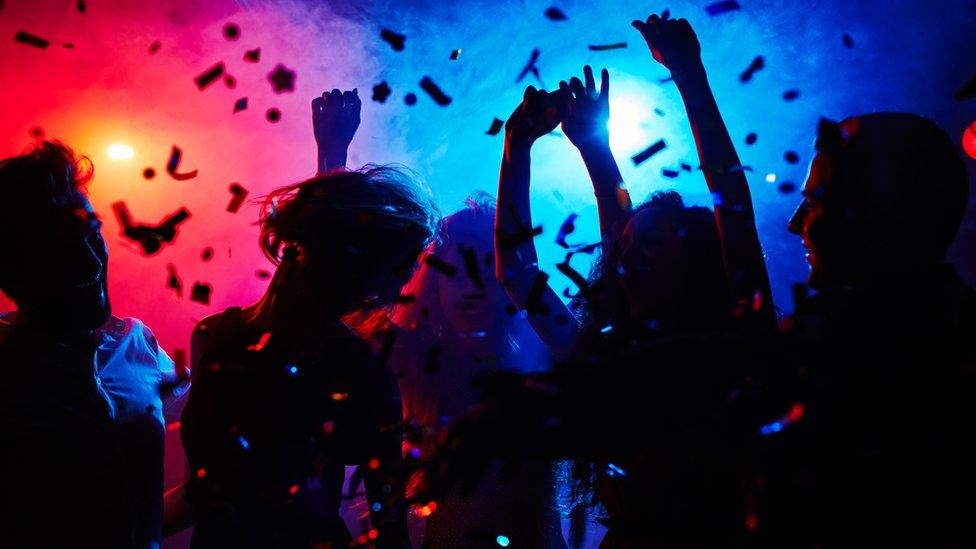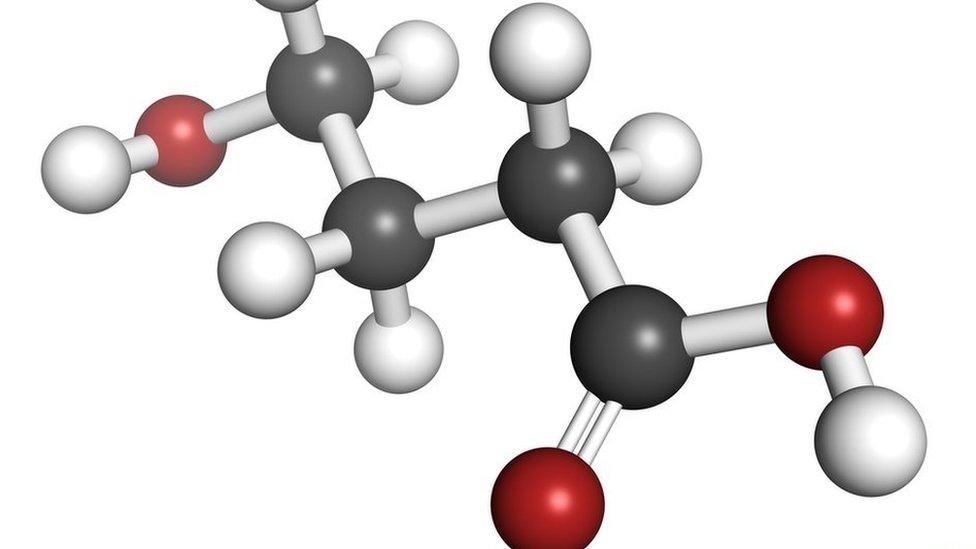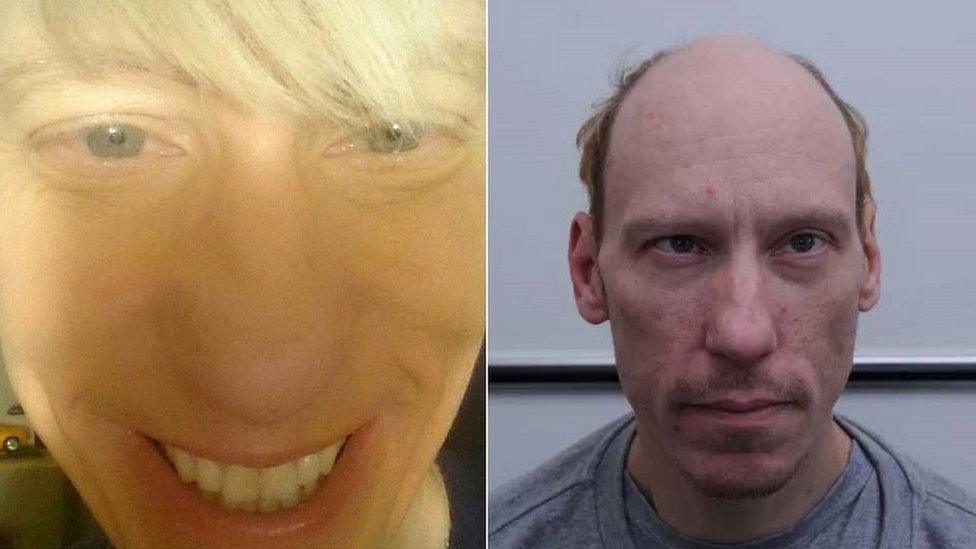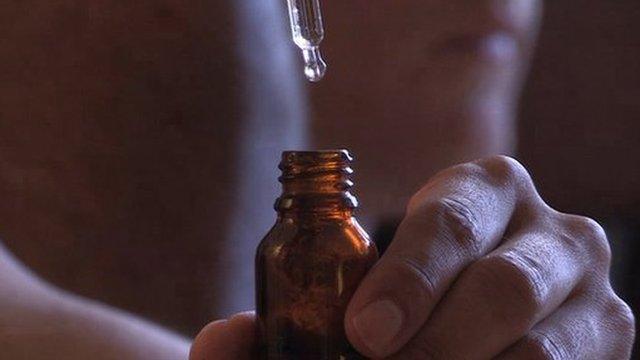GHB: The killer drug used by Stephen Port
- Published

The Metropolitan Police has said it will examine 58 GHB-related deaths, following the conviction of serial killer Stephen Port, who has been given a whole life prison term for poisoning four young men with lethal doses of the date rape drug. But what is GHB and why do people take it?
"I had a cheeky shot here and there daily, but it gets to the point where you can't have sex without chems," says Charles, who says he became addicted to GHB.
The 31-year-old from London says he used the drug for more than 10 years to help him to "let go" of body insecurities and inhibitions.
But it was a friend's fatal overdose on Christmas Day 2015 that prompted Charles to stop using GHB, even though his friends continue to use it.
"The look on people's faces when I say I don't take it - they treat it like I don't drink," he says.
"I don't miss all the drama and accidents that happened with it."
'Very addictive'
Charles says he's had some "horrible experiences" of friends who have passed out from the drug - what he calls "going under" - and thrown out of nightclubs while still unconscious.
"'Going under' can last anything from 20 minutes to five hours and you don't know if that person might need an ambulance," he says.
He says the drug is used in nightclubs and at "chill-out" parties and is "very addictive".

Charles says GHB is "very addictive" and used in nightclubs and at "chill-out" parties
GHB (gammahydroxybutyrate) and similar drug GBL (gammabutyrolactone), an industrial solvent that converts to GHB in the body, are usually sold as odourless, colourless, oily liquids in small bottles or in capsules.
While prices can vary, on average a 30ml plastic container of GHB costs about £15 from a dealer or online.
Commonly known as "G", it is often sold as "liquid ecstasy" because of its euphoric effects, but it has no relation to ecstasy (MDMA).
While the Class C drug increases the desire for sex and reduces inhibitions - the risks include unconsciousness, coma and death.
Those found in possession of it face up to two years in prison and an unlimited fine. Dealing can result in a sentence of up to 14 years.
GHB was the drug that serial killer Stephen Port used to poison four young men.
The judge told Port that he had carried out the murders to "satisfy his lust" for sex with young men who were rendered unconscious.
'Unconscious and vulnerable'
GHB was brought under the Misuse of Drugs Act as a Class C drug in 2003, so dealers switched to GBL as a legal alternative. GBL was eventually made illegal in 2009.
G is used on the "chemsex" scene by "a small proportion" of gay men to enhance sex, says consultant psychiatrist Adam R Winstock, the founder of the Global Drug Survey.
Dr Winstock says GHB was first developed in 1964 as a general anaesthetic, but was never widely used.
"In the 1980s it was popular on the gay dance scene in America," he says.
"However, it will always be associated with the chemsex scene. It has been a gay drug for 10 to 20 years."
He warned that a difference of 0.5ml can have a huge affect on a person's body.
One in five GHB users last year reported to the Global Drugs Survey that they had passed out or overdosed, he says.
Dr Winstock said of the 200,000 drug users surveyed worldwide, about 2,000 had said they had used the drug.
He estimates there are more than 1,000 GHB users in the UK, but the drug "is not mainstream in the way cocaine and amphetamines are".
People who take the drug and pass out "can be very unconscious and vulnerable to sexual assault," he says.
Users also risk becoming dependent in a couple of weeks, he says, and those who are addicted should seek specialist help.

The molecular structure of GHB
Harry Sharpiro, director of drug information charity Drugwise, says the drug has been used primarily on the gay scene "for a while".
"People assume it is part of a growing trend. It is not," he says.
'Difficult to measure'
According to the Office for National Statistics, there were 10 GHB/GBL-related deaths registered in England and Wales in 2015, 12 in 2014, 10 in 2013, eight in 2012 and 10 in 2011.
But Mr Sharpiro says: "Mortality figures are incredibly vague.
"Quite often there will be multiple drugs involved and it is impossible to tell which is the drug that actually caused the death - so I am not surprised the figures don't match up [with the Met Police figures of 58 GHB-related deaths].
Neil Woods, an ex-undercover drugs squad officer, says: "Every single drug is more dangerous in the illicit market because you don't know what is in it.
"But the specific problem with GHB is you don't know how strong it is and a few drops of liquid are difficult to measure, especially if its odourless."
- Published25 November 2016

- Published7 April 2016

- Published2 July 2015
